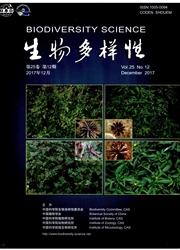

 中文摘要:
中文摘要:
作为全球生态保育的基石,保护区管理和设计成为研究热点。本研究旨在描述不同功能区在相应保护措施下植被的差异性变化。运用遥感和GIS技术以及景观分析手段,利用两期Landsat 5 TM影像提取出北京松山国家级自然保护区1987、2001年的归一化差值植被指数(Normalized Difference Vegetation Index,NDVI)信息,对植被动态进行分析,并按变化率分为减少、无变化和增加3种类型,利用景观指数刻画出变化格局,就植被动态及其变化格局在不同功能区的空间分异性进行比较。得到以下主要结论:(1)保护区建立后植被大体稳定并有所改善,形成核心区〉缓冲区〉实验区的植被覆盖梯度。(2)在绝对保护措施下,核心区植被稳定性高并得到进一步改善。植被稳定类型集中于区域中心,增加类型聚集在区域边缘,减少类型与自然植被动态特征相符呈随机分布状态。(3)受经营、开发措施影响,实验区稳定性低,变化面积大、变幅大、增加与衰退共存,植被覆盖居全保护区最低且有退化趋势。(4)缓冲区植被动态呈现出一定的随机分布格局。
 英文摘要:
英文摘要:
The nature reserve, as a cornerstone of global ecological conservation, has become the focus for ecological management and design programs. The aim of this study is to describe the differentiation dynamics of vegetation in various functional subzones under relevant protection conditions. Based on remote sensing, GIS and other methods of landscape analysis, the 1987- and 2001- normalized difference vegetation index (NDVI) data of Songshan National Nature Reserve, Beijing were calculated using two-stage Landsat 5 Thematic Mapper images. Vegetation analysis was analyzed for trends, including three tendencies: decrease, stabilization and increase. Landscape metrics were calculated to portray the change pattern of vegetation, and spatial heterogeneities of vegetation dynamics and change pattern were compared in various functional subzones. The major results were achieved as follows: (1) Vegetation cover remained in general stable or was to some extent improved since the nature reserve had been established. The gradients of vegetation cover had already been constructed, i.e. core zone 〉 buffer zone 〉 experimental zone. (2) Under the strictest protection measures, vegetation in the core zone appeared to be highly stable and had been further improved. The stabilization-type vegetation dynamic was found in the central part of the zone and the increase-type dynamic was found on the edge of the zone. The decrease-type vegetation dynamic was consistent with natural vegetation dynamics in a randomly distributed state. (3) As a result of development and exploitation, the stabilization of vegetation in the experimental zone was low and variable, with a strong fluctuation as well as a dynamic of alternating increase and decline. Its vegetation coverage was the lowest and the vegetation tended to degrade gradually. (4) To some extent, a random distribution pattern was observed in the vegetation of the buffer zone.
 同期刊论文项目
同期刊论文项目
 同项目期刊论文
同项目期刊论文
 期刊信息
期刊信息
